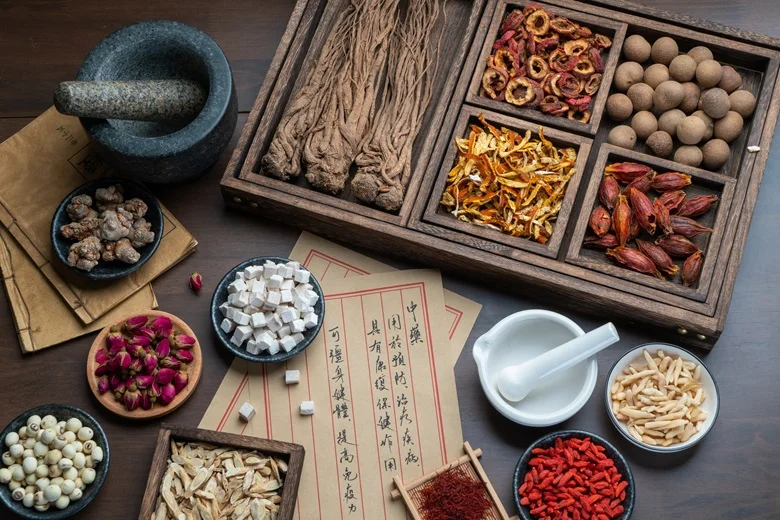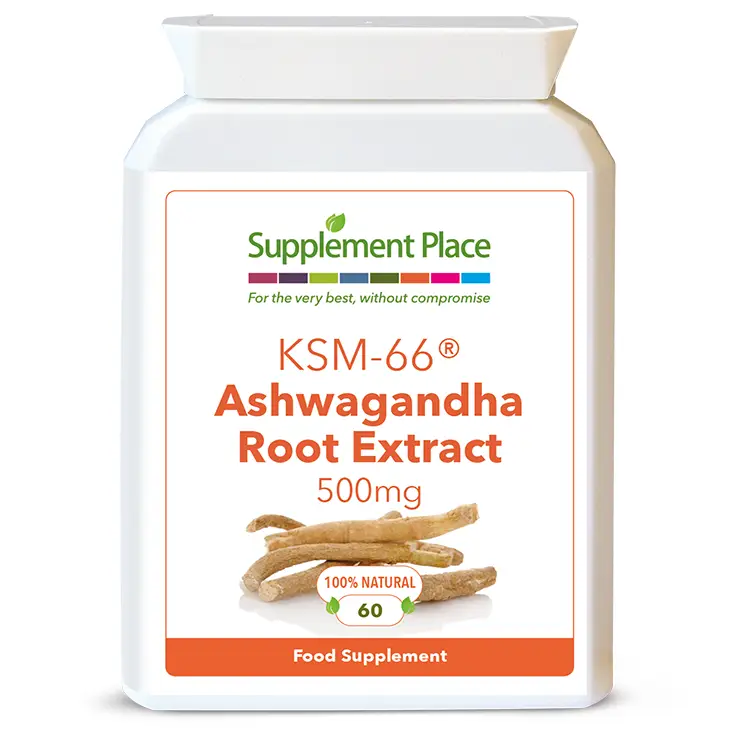Table of Contents
Healing Herbs: From Folklore to Science
From the beginning of time man has used nature to provide medicinal healing. Evidence, in the form of early writings and preserved artwork, have shown human awareness of medicinal plants. This awareness was developed over centuries of man’s fight against illness. Gradually the effect provided by the roots, leaves, barks, and other parts of plants changed from instinct and tradition to tried and tested knowledge. This blog aims to throw more light on the background and botanical identity of some of the herbs well-known for their healing properties.
How Medical Herbalism Evolved

Herbs were being used for medicinal purposes long before records began. The ancient Chinese and Egyptian writings mention using plants as medicine as early as 3,000 BC. Hippocrates, known as the father of modern medicine, classed herbs into groups depending upon their qualities of hot, cold, moist, and dry. He invented a system of diagnosis and prognosis using herbs, and the number of plant species he acknowledged was between 300 and 400.
This evolution of awareness of plant power greatly increased the ability of pharmacists of the day to fulfil the needs of an early developing medical profession. Modern science has researched and endorsed this knowledge, taking many of the discoveries from ancient civilisations to include in current pharmacotherapy.
Since ancient times people have sought to find relief from illness and their search mostly centred around nature. In the early stages the use of plants was instinctive, much in the same way that animals know they need to seek out plants or minerals for self-healing. For humans, there was very little information on what was causing their illness or which plant would help to heal them. Instinct and experience were all they had to draw on, yet over time the use of specific plants for the treatment of certain diseases became apparent. The healing power of plants gradually lost its mythical reputation and the effectiveness of their properties for medical purposes was based on consistent and continued success.
Prior to the 16th century which saw the introduction of iatrochemistry, herbal medicines had been the main source of treatment. Following the advent of iatrochemistry, synthetic drugs began to take centre stage and for many years they became the go-to choice of the medical profession. However, much time has passed and due to increasing side effects caused by certain synthetic drugs, the appreciation and popularity of natural health solutions is now beginning to re-emerge.
Healing Herbs with Scientific Backing
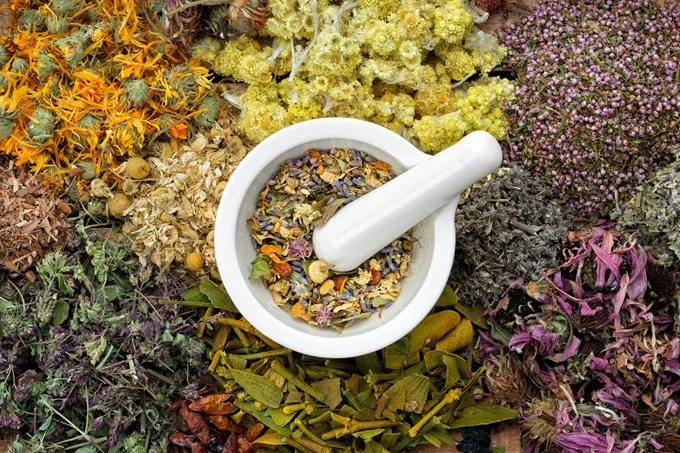
Some of the most well-known herbs used in both ancient and modern natural medicine have been the subject of robust scientific studies. The following examples of healing herbs are amongst those which have been given the seal of approval by current medical research.
Ashwagandha
Botanical name Withania somnifera, also known as Indian winter cherry or Indian ginseng, is one of the most valuable adaptogenic herbs of Ayurveda, the Indian traditional medical system. Ashwagandha’s use can be traced back to 6000 BC and it is known as a ‘rasayana’, meaning herb which promotes a youthful state of physical and mental health. The root of ashwagandha is used as a tonic, aphrodisiac, narcotic, diuretic, anthelmintic, astringent, thermogenic and as a stimulant.
Randomised double-blind, placebo-controlled studies into both the effectiveness and the safety of high-concentrations of full-spectrum, extract of ashwagandha root have taken place with very positive outcomes, particularly for its power to reduce stress and anxiety in adults.
Agnus castus
Also known as chaste tree berry with properties which helps with hormonal imbalance. Agnus castus is often used for pre-menstrual syndrome, to regulate the menstrual cycle as well as for fertility issues. Double blind placebo-based clinical studies have found it to be effective in treatment of pre-menstrual syndrome symptoms.
Agnus castus is known for its dopamine and melatonin boosting properties, both of which help lift mood and encourage better quality sleep.
Chamomile
Chamomile (botanical name Chamomilla recutita) is one of the most widely used ancient medicinal herbs and is a member of the Asteraceae family. When dried, the small, daisy-like flowers contain various terpenoids and flavonoids which are the plant’s valuable active properties.
Chamomile has a reputation for being a calming herb traditionally used to ease anxiety. It is also an anti-inflammatory and is known to ease muscle spasms, relieve menstrual problems, dispel insomnia, and reduce the symptoms of gastrointestinal disorders.
A randomised trial with 179 participants was conducted between March 2010 and June 2015. The trial was to establish camomile’s effect on patients with generalised anxiety disorder and it showed positive results.
Curcumin (Turmeric)
Curcumin is the name of the active ingredient of the dried rhizome of turmeric, biological name Curcuma longa. In the countries of Asia, turmeric has been a favourite dietary spice and a cure for many health issues for thousands of years, yet despite its traditional reputation as a natural healer, the full characteristics of curcumin were not scientifically identified until the middle of the twentieth century. In 1949 a paper was published in the journal Nature which highlighted the fact that curcumin had been discovered to have anti-bacterial properties. It was not until the 1970s that it was made the focus of multiple scientific studies, and its full potential began to unfold.
Curcumin was found to have anti-diabetic, anti-inflammatory, antioxidant, and cholesterol lowering properties. By 2011 over 4000 articles on curcumin were listed in the National Institute of Health PubMed database (www.ncbi.nelm.nih.gov/sites/entrez).
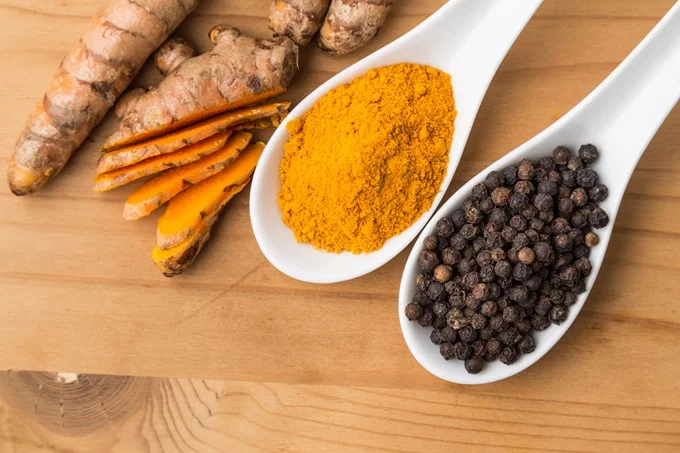
Despite its therapeutic effectiveness against many ailments, there was found to be a problem with curcumin due to poor absorption within the human body. This necessitated further research to find a means of improving curcumin’s bioavailability. It was discovered that the addition of piperine, the active ingredient of black pepper, gave a twenty-times increase in bioavailability when taken along with curcumin. For this reason, when purchasing curcumin as a supplement, it is vital that you choose a product which has added piperine, sometimes labelled ‘black pepper’.
Echinacea
A member of the Asteraceae family, echinacea is a native of eastern and central North America and was one of the prairie plants used for medicine by the indigenous American people. It is also known as purple coneflower. Echinacea is possibly the most widely used medicinal herb for supporting the immune system.
Other benefits include antimicrobial and decongestant properties which help with upper respiratory infections. It is also known for reducing pain and inflammation, as well as improving skin conditions.
The largest clinical trial ever conducted on the effectiveness and safety of echinacea was conducted in 2009 at the Common Cold Centre, University of Cardiff. The trial outcome showed positive findings both in terms of safety and effectiveness.
Elecampane
Botanical name Inula helenium, elecampane contains the polysaccharide inulin which provides soluble fibre to the gut and works as a digestive aide, boosting absorption of nutrients and stimulating appetite. Extracts of elecampane promote a healthy respiratory system, helping to ease symptoms of asthma and persistent coughs. Its antibacterial properties make it useful in cases of antibiotic-resistant illnesses such as MRSA.
Findings from a sponsored randomised, double-blind, placebo-controlled clinical trial of 106 children with acute cough, to evaluate the effectiveness of a cough syrup containing inula helenium extract, were published in January 2021. The trial showed positive findings that the syrup was well tolerated and produced positive effects by reducing the severity and shortening the duration of cough symptoms.
Feverfew
Botanical name Tanacetum parthenium, is a member of the daisy family Asteraceae. It is sometimes grown as a garden plant but also thrives in the wild, often growing along roadsides, fields, and the edges of woodland. The name feverfew is derived from the Latin word febrifugia, meaning ‘fever reducer.’
Feverfew has traditionally been used to treat a variety of issues including asthma, arthritis, constipation, dermatitis, earache, fever, headache, inflammatory conditions, insect bites, and menstrual disorders. A tincture made from the flowers may be used as an insect repellent and to soothe insect bites.
The leaves provide a natural herbal extract called parthenolide which works on serotonin receptors in the brain and may give relief from migraine headaches. This substance is also thought to have anti-inflammatory, pain relieving, and antihistamine effect.
A randomised, double-blind, placebo-controlled crossover study was conducted amongst 72 volunteers. Treatment with feverfew was linked to a reduction in the number and severity of migraine attacks and in the degree of vomiting. No serious side effects were reported.
Extracts of feverfew have been found to inhibit the release of enzymes from white cells found in inflamed joints. This inflammatory effect is also thought to occur in the skin, suggesting a possible use of feverfew to ease psoriasis.
Guelder Rose – Cramp Bark
The Botanical name of guelder rose is Viburnum opulus, which is a flowering shrub native to Europe, Central Russia, North America, and certain areas of Africa and Asia. It has white snowball-like blossoms in May, followed by clusters of red berries in Autumn. The Guelder Rose is known by many names such as the snowball tree, cranberry-bush, water elder, rose elder, and cherry-wood.
A citrate compound found in the berries of the plant have been found to be beneficial to anyone at risk of kidney stones and for generally promoting healthy kidney function. Laboratory tests have also found compounds effective as diuretics to treat fluid retention and for reducing swollen glands.
The name ‘cramp bark’ is due to an antispasmodic extract called scopeletin, found within the bark of the guelder rose tree. This herbal extract has long been a valuable support for relieving spasms, particularly those associated with menstruation. Cramp bark can help lessen heavy menstrual bleeding, particularly associated with menopause. It is also known to provide postpartum relief, so is helpful following childbirth to help reduce muscle tension without affecting muscular function.

Cramp bark works well on all types of cramp, including gastrointestinal, bronchial, and skeletal muscle spasms. In addition to its antispasmodic properties, it has antioxidant benefits which protect cells from oxidative damage and cleanse the liver and kidneys of toxins. The bark contains methyl salicylate, a weaker form of salicylic acid, like aspirin but with a less aggressive outcome to the linings of the digestive tract.
Cramp bark helps increase circulation and blood flow. When muscles are relaxed, they work better, and an improved blood flow helps the body get rid of waste products. Because it promotes widening of the blood vessels, cramp bark helps blood to flow more easily, and this has a good effect on blood pressure, also giving improved circulation to the extremities.
Many research studies have taken place to establish the various properties in Viburnum opulis, including its anti-inflammatory potential.
Ginseng
Ginseng was first discovered growing in the Manchuria Mountains of China over 5000 years ago and is documented in books dating back for more than two millennia. The Latin name for ginseng is Panax ginseng, which is derived from the Greek word panacea. It was the most treasured of all herbs in ancient Chinese medicine and was found to help with a wide range of illnesses.
A similar strain of ginseng grows in America, botanical name Panax quinquefolius. Both Asian and American ginseng has been widely used for reducing stress, boosting cognitive function, as an anti-inflammatory, correcting sexual dysfunction in men, and lowering blood sugar.
Western scientific research has made the following observations into the effect of ginseng on these medical issues:
- Improved Cognitive Function
- Ginseng has been found to reduce oxidative stress, thereby promoting enhanced cognitive function.
- A study conducted in 2016 to assess the effects of Korean ginseng on patients with Alzheimer’s disease recorded promising results.
- Anti-inflammatory Properties
- The anti-inflammatory properties of ginseng were the subject of a 2020 study where ginsenosides, the active components of ginseng, were found to impact on the pathways in the immune system to reduce inflammation.
- Sexual Function in Men
- A study was conducted in 2012 to see if 119 participants, men with mild to moderate erectile dysfunction, found improvement after eight weeks of taking ginseng berry extract. Some members of the group received the ginseng while others received a placebo. The men taking the ginseng found that their overall sexual function was improved. However, it was noted that more research is needed to determine if ginseng is a completely reliable treatment for ED.
- Lowering Blood Sugar Levels
- A 2014 double-blind, placebo-controlled clinical trial to assess the lowering effects of fermented red ginseng in participants with impaired fasting glucose or type 2 diabetes concluded that daily supplementation with FRG lowered glucose levels and increased insulin levels after a meal, compared to the placebo.
- A systematic review and meta-analysis of randomised controlled clinical trials indicate that that ginseng may help lower blood sugar and help treat diabetes. The active ingredients of ginseng, ginsenosides, may have an impact on insulin production in the pancreas, resulting in an improved insulin resistance.
Research is ongoing to determine ginseng’s place as a complementary therapy for diabetes. Further research into specific dosage for maximum effectiveness is also needed.
Ginkgo Biloba
Sometimes called the maidenhair tree, ginkgo is the oldest species of tree in the world. It can grow to over 130 feet and may survive for over one thousand years. Ginkgo has the status of being a living fossil because it has survived even major extinction events. The extract from ginkgo leaves is used as an herbal supplement.
Among the clinically recognized benefits of ginkgo are properties to help with cognitive function, reducing bladder infection, and boosting sexual energy.
A clinical trial of 1996 found that ginkgo is effective in treating mild dementia. Researchers believe that ginkgo improved cognitive function due to its ability to promote good blood circulation to the brain which protects the brain from neuronal damage.
Studies have found that ginkgo may help lessen symptoms of anxiety.
Research is ongoing into ginkgo’s potential for reducing symptoms and slowing the advancement of glaucoma and age-related macular degeneration. Properties which increase blood flow to the eyes have shown encouraging prospects, but further studies are required.
Hops
Perhaps best known for the role they play in brewing beer, hops are the female flowers of the climbing plant whose Latin name Humulus lupulus, means ‘wolf of the woods’. The name ‘hop’ is derived from the Anglo-Saxon word ‘hoppan’, meaning ’to climb’, which they certainly do, sometimes to a height of 5 metres.
Each hop flower contains oil resins, and these are what give the aroma and preservative properties. Alpha acid is the substance which provides the bitterness to beer.
Dating back to the 9th century hops were used in herbal medicine in Europe. They were used to treat a variety of illnesses from indigestion to leprosy. In later years, following their adoption as an ingredient in beer brewing, anecdotal evidence emerged when it was noticed that hop pickers were frequently falling asleep during their working hours. This phenomenon resulted in some early scientific studies into the sleep-inducing powers of hops, but these proved inconclusive. However, more recently researchers have taken a closer look at hops with the result that not only their sedative properties, but also their antispasmodic ability, has been verified.
Research is currently ongoing to further establish the potential of the bioactive substances in hops for use in the treatment of certain modern-day chronic diseases.
Lemon Balm
Lemon balm is known as a calming herb and is grown all over the world, both in herb gardens and as a crop for medicine and cosmetic purposes. Its botanical name is Melissa officinalis, and it is a member of the mint family. Lemon balm has traditionally been used for supporting the central nervous system by reducing anxiety and promoting sound sleep. It is also good for easing digestive issues, particularly when they are linked to anxiety. Before the middle-ages the plant was steeped in wine and the resulting liquor used to lift the spirits, heal wounds, and to treat insect bites.
Today lemon balm, due to its antiviral properties, is used in preparations to treat the cold sore virus and is often mixed with other calming herbs such as valerian and hops to promote better sleep.
Supplements of lemon balm are made from the leaves whose essential oils contain chemicals called terpenes and tannins. These are the source of lemon balm’s antiviral properties. It is also rich in an antibacterial compound called eugenol and many studies have validated its antioxidant properties.
Meadowsweet
Botanical name Filipendula ulmaria, is a plant found growing wild, particularly in water meadows and beside streams. It is native to Europe and Asia and can be found growing in most areas of the British countryside, including roadside verges. It contains compounds that decrease swelling, and chemicals known as salicylates which help ease arthritic and rheumatic joints, headaches, musculoskeletal pain. Research trials have found meadowsweet to have anti-inflammatory properties which can help various conditions.
Meadowsweet is used as a digestive aid and gives soothing relief to the mucous membranes of the digestive tract. It is known to regulate levels of stomach acid, making it a non-pharmaceutical option for alleviating indigestion and heartburn.
Milk Thistle
Botanical name Silybum marianum, milk thistle belongs to the Asteraceae family so is related to the daisy. It has red to purple flowers and pale green leaves with white veins.
The most well-known use for milk thistle as a supplement is to support and restore liver function. However, it may also help maintain healthy cholesterol levels, balance blood sugar levels and bone health. It is also associated with use for cirrhosis, jaundice, hepatitis, and gallbladder disorder.
The active ingredient in milk thistle is silymarin and it acts as an antioxidant by reducing free radical production.
Scientists have found that this is due to a detoxifying action and is the reason it is beneficial for liver problems.
Moringa
Moringa olifera is known by various other names such as drumstick tree or horseradish tree. It is a fast-growing, drought-resistant tree native to the foothills of the Himalayas in Northwestern India.
In Asia and Africa, Moringa has been highly valued for centuries for its nutritional and health-giving properties.
Moringa is confirmed by modern science to be a multi-purpose herbal plant, suitable for food as well as medicinal purposes. Research has verified its numerous health benefits due to essential amino acids and carotenoids contained in its leaves.
A further factor which gives moringa its reputation as an important medicinal plant is its very wide range of antioxidants, antibiotics, and nutrients, including vitamins and minerals.
There is substantial clinical evidence showing that moringa can give serious help with immune-related conditions. It has been found to be capable of eliminating pathogens, including bacteria, fungi, viruses, and parasites. It can also reduce chronic inflammation in such conditions as asthma, ulcerative colitis, and metabolic diseases. Findings also show that it has the capability to reduce the effects of such disorders as drug side effects, or the adverse effect of chemical food additives. Moringa has been found to reduce the symptoms of autoimmune diseases such as multiple sclerosis and rheumatoid arthritis.
Read more about Moringa here.
Reishi Mushroom
Botanical name for reishi is Ganoderma lucidum, also known as lingzhi. Reishi are medicinal mushrooms with an ancient tradition in China, Japan, and other Asian countries, of promoting health and longevity. The mushrooms are large and dark in colour with a shiny surface and a woody texture.
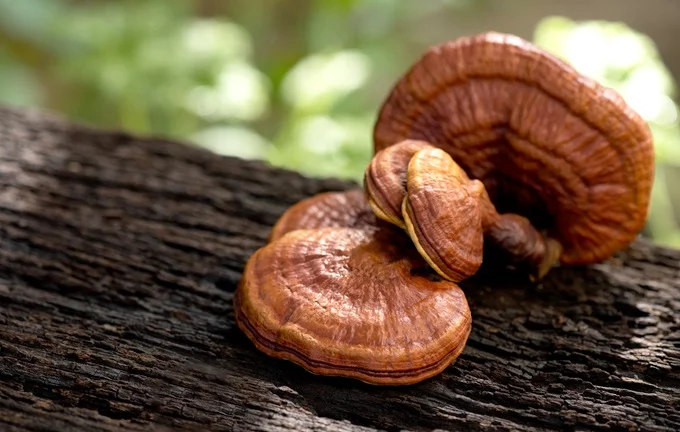
The Chinese name lingzhi means a mixture of spiritual potency and essence of immortality. In ancient Chinese medicine it was regarded as the herb of spiritual potency. It symbolised success, well-being, divine power, and longevity.
It is a unique feature of reishi that it is cultivated for its pharmaceutical rather than nutritional value. Some of the health benefits attributed to it are blood glucose control, balancing the immune system, hepatoprotection (giving protection to liver function), and bacteriostatic (blocking the growth of bacteria).
Beliefs regarding the health benefits have been based largely on anecdotal evidence and traditional use, however, recent reports provide scientific support to some of the ancient claims. The active compounds found in the mushrooms include polysaccharides, dietary fibres known as oligosaccharides, triterpenoids, peptides and proteins and minerals such as zinc copper, iodine, selenium, and irons, along with vitamins and amino acids.
Tongkat Ali
From South-East Asia, Eurycoma longifolia Jack, known as Tongkat ali, is a medicinal plant well known in traditional herbal medicine for its aphrodisiac, antimalarial, anti-diabetic, anti-microbiaol, and anti-pyretic benefits.
Tongkat ali has been scientifically assessed and validated for its libido-boosting properties and ability to enhance male sexual performance and boost testosterone levels.
Scientific research has discovered that the plant is rich in several bioactive compounds, including alkaloids and quassinoids, and research is currently ongoing to provide further solid information for its use in commercial pharmaceutical medicines.
Tribulus Terrestris
Sometimes known as gokharu, or puncture vine, Tribulus terrestris is a small leafy plant which grows in Europe, Asia, Africa, and the Middle East.
The roots and fruits of the plant have been used as traditional medicine in both Chinese and Indian Ayurvedic practices where it has been prized for its power to enhance libido, boost testosterone, support urinary tract health, and reduce swelling.
Many studies have been carried out to validate the multiple therapeutic effects of Tribulus terrestris. Findings show that various parts of the plant contain compounds which are medicinally important such as flavonoids, flavonol glycosides, steroidal saponins, and alkaloids. These provide many health benefits across a range of issues, some of which include support for the central nervous system, as a diuretic, aphrodisiac, anti-inflammatory, antispasmodic and it is also believed to have properties which can lower blood sugar, so giving it anti-diabetic potential. Research into this is ongoing.
Valerian Root
Valerian officinalis is a native of Europe, Asia, and North America and has been used as a medicinal plant since the times of early Greece and Rome. Traditionally it was used to treat insomnia, migraine, and stomach cramps. In recent times it is mainly used to help promote sleep, reduce anxiety, PMS, and headaches. The roots and rhizomes of valerian are the parts of the plant which are used for medicinal purposes.
Research and evaluation of valerian on sleep patterns has found that when taken nightly over one-to-two-week periods by those with mild to moderate insomnia, it proves safe and effective.
The Future of Medicine from Plants

It is now widely recognised that whilst modern pharmaceutical medicines are vital, many of them have side effects and toxicities such as the overuse of antibiotics resulting in antibiotic resistance. Many pharmaceutical drugs are already based on natural herbal properties and scientific research is continuing to increase clinical knowledge of herbal medicines which may currently be underutilised simply because they haven’t been thoroughly studied.
As well as herbal medicines, health-giving plants may be used as dietary supplements to improve nutrition, and this is vital for future health. There is a famous quote from Hippocrates: ‘Let food be thy medicine and medicine be thy food’. Another well-documented quote from the surgeon, biologist and Nobel prize-winner Alexis Carrel: If the doctor of today does not become the dietician of tomorrow, the dietician of today will become the doctor of tomorrow. The words of these two great men are ever more relevant.
The active ingredients of many of the healing herbs described in this blog are available in supplement form on our website. In-depth information on many aspects of natural health can be found in our blogs.
Our Promise
When it comes to keeping you informed on health and nutrition, we’re here for you and aim to help where we can. If you would like to discuss any aspect of using natural supplements, or would find advice helpful, please feel free to contact us on 01297 553932.
Always very efficient. Packages are able to come through the letter box which is a bonus. Particularly appreciate the vegan omega 3.
Over several years now they have always delivered me quality products prompty. I can recommend Supplement Place without hesitation.
Excellent service. I love the thin storage friendly containers that take up minimal space in my cupboard. Such a brilliant idea!! ?

